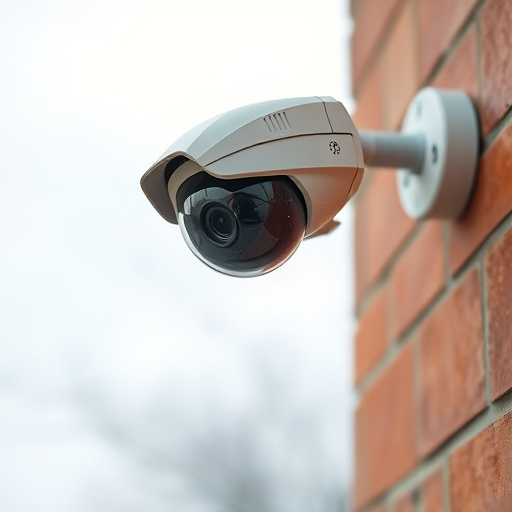Optimizing fake security camera placement involves strategic consideration of height, balancing line-of-sight, discretion, and local regulations. For residential areas, a height of 5–10 feet (1.5–3 meters) is suitable, while commercial properties may require cameras mounted at 10–20 feet (3–6 meters) or higher. Placement should ensure realism, avoid excessive height, maintain natural field of view, and consider environmental factors. Strategically placing cameras at varying heights maximizes deterrence, mimicking genuine surveillance to enhance real security measures. Key considerations include focusing on high-risk areas and past criminal activity for comprehensive coverage.
In today’s digital era, enhancing security through strategic fake security camera placement is a game-changer. Understanding the art of positioning these devices effectively can deter crimes and provide peace of mind. This article delves into the optimal fake security camera height placement, offering insights on key factors to consider. From choosing the right location to ensuring discreet installation, we explore best practices to maximize security without compromising aesthetics.
- Understanding Fake Security Camera Placement
- Factors to Consider for Optimal Height
- Best Practices for Discreet Installation
- Enhancing Security with Strategic Positioning
Understanding Fake Security Camera Placement
Understanding the optimal fake security camera placement is key to enhancing home or business security. One critical aspect to consider is the fake security camera height placement. Strategically positioning cameras at various heights can significantly improve surveillance capabilities. Lower-mounted cameras capture detailed ground-level footage, making them ideal for detecting and preventing intrusions on foot. In contrast, higher-placed cameras offer a broader view, effectively monitoring overhead activities and providing additional layers of protection against airborne threats or unauthorized access via rooftops.
By combining different height levels, security systems can create a comprehensive surveillance network. This multi-layered approach ensures that potential intruders are detected from multiple angles, making it more difficult for them to go unnoticed. It’s essential to balance the camera heights with the overall layout of the area being monitored, considering factors like terrain, vegetation, and structural features to achieve an effective fake security camera placement strategy.
Factors to Consider for Optimal Height
When determining the optimal height for fake security camera placement, several factors come into play. The primary consideration is line-of-sight—ensuring the camera has an unobstructed view of the targeted area. This means placing the camera high enough to avoid obstructions like trees, signs, or other buildings, which could block its view. In residential areas, a height of 5–10 feet (around 1.5–3 meters) off the ground is often ideal, offering a clear sightline while remaining relatively discreet.
For commercial properties or high-security zones, the camera’s placement might need to be significantly higher. A typical industrial or retail setting could benefit from cameras mounted at 10–20 feet (around 3–6 meters) or more, providing comprehensive coverage and deterring potential intruders. Additionally, local regulations and guidelines regarding surveillance equipment should always be considered to ensure compliance with privacy laws and standards.
Best Practices for Discreet Installation
When discreetly installing fake security cameras, positioning them at optimal heights is key to enhancing their effectiveness and realism. Best practice suggests mounting them at eye level or slightly elevated—this mimics natural surveillance angles and gives the illusion of an active security system. Avoid placing them too high, as it may appear unnatural; instead, focus on a realistic field of view that aligns with actual camera placements.
Consider the environment and potential vantage points. In residential areas, position the cameras near windows or doors, ensuring they’re not obstructed by foliage or other objects. For commercial spaces, mimic real camera strategies by placing them at entryways, parking lots, and high-traffic zones to deter potential intruders.
Enhancing Security with Strategic Positioning
Strategic placement of fake security cameras can significantly enhance real security measures. By mimicking genuine surveillance equipment, these decoys deter potential criminals by conveying a strong message that your property is under constant observation. The key to their effectiveness lies in smart positioning, particularly focusing on areas prone to unauthorized access or past criminal activity.
When considering the optimal height for fake security camera placement, remember that visibility and angle are crucial. Mounting them at varying heights, including eye-level and slightly elevated positions, creates a more realistic and comprehensive coverage illusion. This multi-layered approach adds an extra layer of protection, making it harder for intruders to anticipate or avoid detection.
In conclusion, strategic fake security camera placement is key to enhancing surveillance and deterring potential threats. By understanding the optimal height for installation and employing discreet practices, property owners can create an effective security system without compromising aesthetics. Considering various factors ensures a robust network that provides comprehensive coverage, making it a valuable investment for peace of mind and asset protection.
